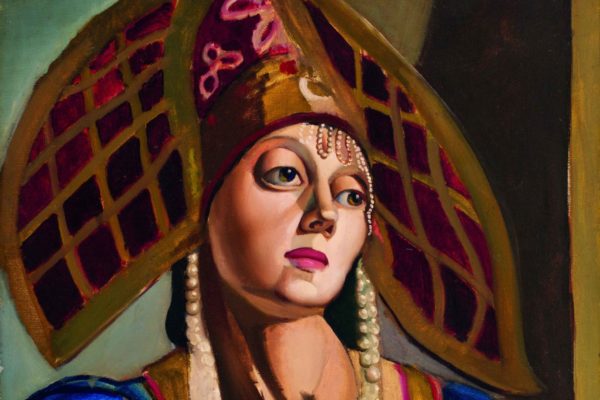Exhibition from October 17, 2025 to February 15, 2026
The “School of Paris” refers to the tremendous artistic momentum that emerged in Paris at the beginning of the 20th century, when artists from all over the world—particularly Eastern Europe, but also Spain, Italy, Japan, Mexico, Great Britain, and the United States—settled in Montmartre and then Montparnasse, making the capital their source of inspiration and the place where they perfected their art.
The term emerged during the “quarrel of the foreigners” at the Salon des Indépendants around 1923-1924. Initially used to criticize the growing influence of artists from abroad, it was popularized by art critic André Warnod, who, on the contrary, celebrated their presence. This cultural mix gave rise to a thriving artistic scene where Post-Impressionism, Cubism, Fauvism, and Expressionism rubbed shoulders and mingled, giving birth to new forms of creativity. Montmartre and Montparnasse became the cradles of the avant-garde, and Paris a veritable cultural crossroads.
Reflecting this tremendous creative momentum, the Marek Roefler collection embodies the spirit and diversity of the School of Paris with rare intensity. Preserved at Villa La Fleur near Warsaw, it is being presented for the first time “outside the walls” through an emblematic selection of works. It particularly highlights the legacy of Polish and Jewish artists, emphasizing their importance in the emergence of the avant-garde.
The names of renowned artists such as Ossip Zadkine, Tamara de Lempicka, and Moïse Kisling accompany those of a generation often less known to the general public but essential to the richness of the movement: Henri Hayden, Eugène Zak, Henri Epstein, Mela Muter, Maurice Mendjizky, Simon Mondzain, Wladyslaw Slewinski, Jozef Pankiewicz, Louis Marcoussis, Alice Halicka, and sculptors Auguste Zamoyski, Boleslas Biegas, and Jozef Csaky.

The exhibition illustrates the creative abundance of the School of Paris, as well as the plurality of styles that characterizes this movement. The influence of Cézanne, Gauguin, and Van Gogh rubs shoulders with the independent development of several artists who forged their own aesthetic under the banner of free thinking, in the years when Guillaume Apollinaire, Max Jacob, Ambroise Vollard, and many others contributed to the intellectual and commercial influence of the avant-garde. By celebrating the diversity and audacity of these creators, the exhibition invites us to rediscover the central role of Paris in the history of modern art and to feel the collective momentum that profoundly transformed its codes.
Under the patronage of the Embassy of the Republic of Poland in France and the Polish Institute in Paris, the exhibition L’École de Paris, Marek Roefler Collection is organized in partnership with the Villa La Fleur Museum in Konstancin-Jeziorna, Poland, and with the collaboration of the Basilica of the Sacred Heart of Montmartre.
Held under the patronage of the Embassy of the Republic of Poland in France and the Polish Institute in Paris, this exhibition and the accompanying publication have been produced in partnership with Villa La Fleur museum, in Konstancin-Jeziorna, Poland, and with the collaboration of the Basilique du Sacré-Coeur de Montmartre.
FURTHER INFORMATION
Discover the works from the Roefler collection on display in the Basilica of the Sacred Heart of Montmartre, as part of the exhibition at the Musée de Montmartre!
This monumental panel is a full-scale preparatory version of a project that was never completed in its final mosaic form. The work was created in 1932 by Jean Lambert-Rucki and Jean Dunand, two leading figures of the Art Deco movement in France. The panel demonstrates the synergy between Dunand's mastery of materials—lacquer, metal, inlay—and Lambert-Rucki's unique artistic vision, which combines modernist abstraction and spiritual symbolism. “Christ in Majesty” remains a powerful synthesis of craftsmanship, devotion, and innovation!

